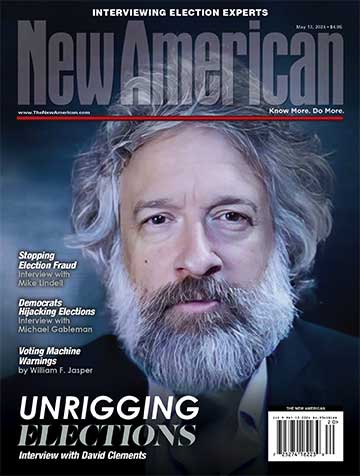
A small percentage of teens who are depressed or bullied will respond with violence. After reading a recent report on school violence from the U.S. Secret Service, however, you’d be led to believe that every one of them is a potential mass-murderer.
“Secret Service research findings [indicate that] targeted school violence is preventable,” the U.S. Secret Service’s National Threat Assessment Center (NTAC) Director James Murray writes in a new NTAC report. All schools have to do is treat any student in any sort of distress as a potential danger to everybody else and respond accordingly. That sounds nice, but the plan completely ignores the potential for traumatizing innocent students.
Titled “Protecting America’s Schools: A U.S. Secret Service Analysis of Targeted School Violence,” NTAC’s report claims that administrators and teachers in the country’s publicly funded schools must take steps to preempt the possibility that any student who shows signs of depression or isolation be mobilized toward terrorizing his tormentors in a violent manner.
The Secret Service would have teachers and administrators set a tone of taking the threat of armed violence very seriously and thus increasing the depth and breadth of the monitoring and reporting of “concerning” behavior.
Lest any reader believe that this story on the Secret Service’s report is exaggerated, here are a few relevant quotes from the NTAC reports:
This approach is intended to identify students of concern, assess their risk for engaging in violence or other harmful activities, and implement intervention strategies to manage that risk. The threshold for intervention should be low, so that schools can identify students in distress before their behavior escalates to the level of eliciting concerns about safety.
Because most of these attacks ended very quickly, law enforcement rarely had the opportunity to intervene before serious harm was caused to students or staff. Additionally, many of the schools that experienced these tragedies had implemented physical security measures (e.g., cameras, school resource officers, lockdown procedures). Prevention is key.
The call here is to manage students already under the pall of being “special needs” by placing them under a suspicion of being likely to kill many of those with whom they associate in these government-funded and managed “schools.”
So, just what sorts of behavior and thoughts — yes, thoughts — are those which must be recorded and reported so that they do not lead a student to kill his classmates? The Secret Service claims:
The observable mental health symptoms displayed by attackers prior to their attacks were divided into three main categories: psychological (e.g., depressive symptoms or suicidal ideation), behavioral (e.g., defiance/misconduct or symptoms of ADHD/ADD), and neurological/developmental (e.g., developmental delays or cognitive deficits). The fact that half of the attackers had received one or more mental health services prior to their attack indicates that mental health evaluations and treatments should be considered a component of a multidisciplinary threat assessment, but not a replacement. Mental health professionals should be included in a collaborative threat assessment process that also involves teachers, administrators, and law enforcement.
The U.S. Secret Service is calling for teachers, administrators, and law enforcement to single out, isolate, and treat as a threat any student who suffers from any one of the listed mental distresses.
As a former teacher in a public school (it was styled a “charter school,” but it was funded by and dictated to by the federal government), I can tell you that the number of students who, according to the above list, would qualify as a person with a potential — a likelihood — of coming to school with the intent of murdering his peers and his teachers is disturbingly high and would serve to preemptively punish dozens of students with the taint of being potential mass-murderer.
I can personally witness that with rare exception — so rare as to be statistically irrelevant — every one of the students I taught who were being treated for any of the mental ailments listed by the Secret Service were good, humble, and hard-working young people without desire or capacity to carry out the terroristic acts of violence the federal agency that authored the NTAC report warned they might commit.
Next, we will look at two of the “risks” that the U.S. Secret Service insists must be “assessed” by administrators and teachers if they are going to stop the next school shooting before it occurs: family life and access to weapons.
First, family life. As stated in the Secret Service report:
The field of study examining adverse childhood experiences (ACEs) finds that experiencing certain adverse events in childhood can result in a range of negative outcomes later in life, particularly when a child experiences multiple ACEs. ACEs include things like parent separation and divorce, substance abuse in the home, family violence, abuse, family incarceration, and family mental illness.
The Secret Service lists the following household “difficulties” as contributing to the likelihood of a young person one day coming to school with the purpose of murdering his associates:
• Bankruptcy
• Eviction
• Homelessness
• Failure to Pay Child Support
• Foreclosure
• Fraudulent Check(s)
• Lien
• Low Income
• Poverty
How many of our young men and women come from homes burdened with economic distress?
Finally, there is the familiar call for disarmament as a surety for safety:
Most attackers used firearms, and firearms were most often acquired from the home: Many of the attackers were able to access firearms from the home of their parents or another close relative. While many of the firearms were unsecured, in several cases the attackers were able to gain access to firearms that were secured in a locked gun safe or case. It should be further noted, however, that some attackers used knives instead of firearms to perpetrate their attacks. Therefore, a threat assessment should explore if a student has access to any weapons, with a particular focus on weapons access at home. Schools, parents, and law enforcement must work together rapidly to restrict access to weapons in those cases when students pose a risk of harm to themselves or others.
It will come as no surprise to regular readers of The New American that the U.S. Secret Service subtly called for the removal of guns from the homes of all those who are believed — by teachers and administrators in public and charter schools — to be on the brink of unspeakable crimes against their classmates.
Here’s the way the Secret Service sees the situation with regard to children who come from homes with weapons:
Eight of the attackers (32%) acquired a firearm on the day of the attack. Five additional attackers (20%) acquired a firearm the day before the attack, and four attackers (16%) acquired a firearm between two and seven days prior. This finding reinforces the importance of a swift response to situations involving students who may pose a risk of harm to themselves or others, especially those who have access to weapons in the home.
Just how and by whom will the children of gun owners be identified and their violent proclivities be neutralized? The U.S. Secret Service declares: “If a child poses a risk of harm to him/herself or others, it is the responsibility of parents, law enforcement, and schools to collaboratively determine the most appropriate avenue for ensuring that the child does not have access to weapons.”
Are schools now to be given the authority to make sure a child with other contributing factors does not have access to weapons in the home?
How many of you have children in public/charter schools? How many of those children have been diagnosed with one of the disorders listed above? How many of you own weapons? How many of you will leave your children in those public/charter schools knowing that the federal government that controls them has now publicly called on teachers and administrators to help ensure that your children aren’t allowed to stay in a home with access to weapons?
How much longer will conservatives, Christians, constitutionalists, and others committed to the preservation of limited government and the sanctity of the family continue to support these government schools by sending their children to them?



